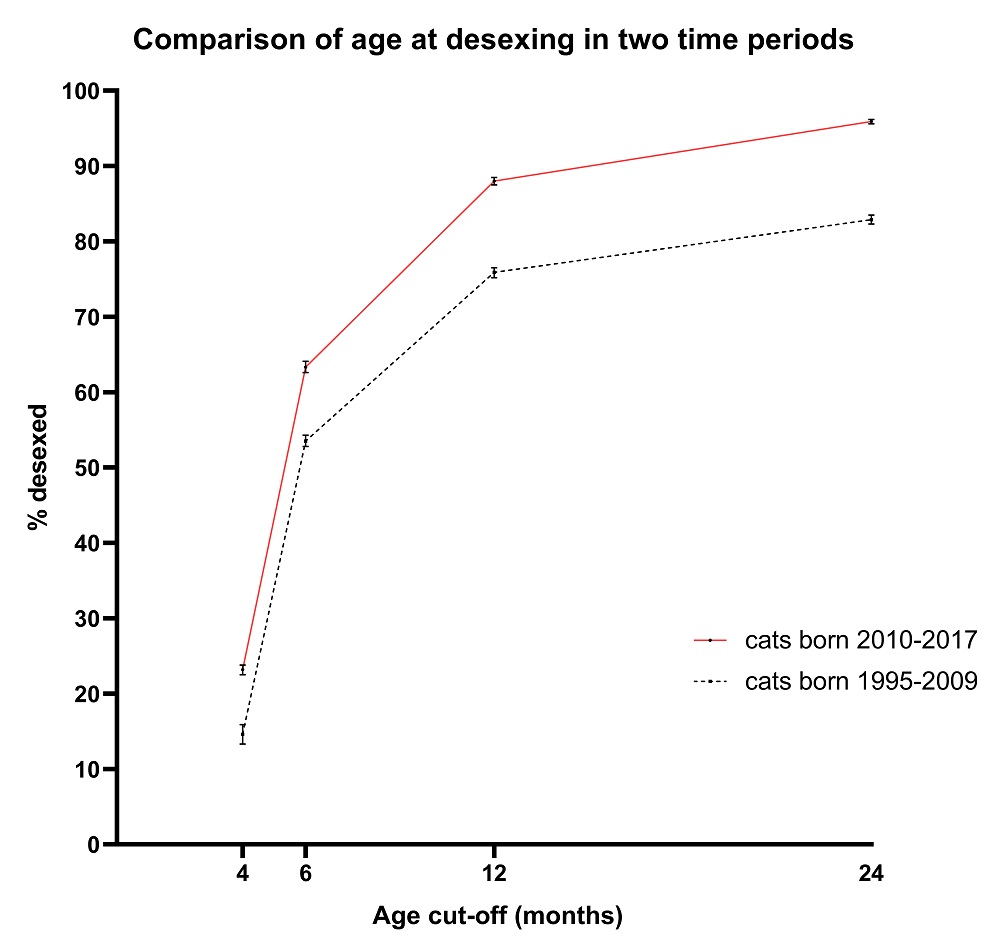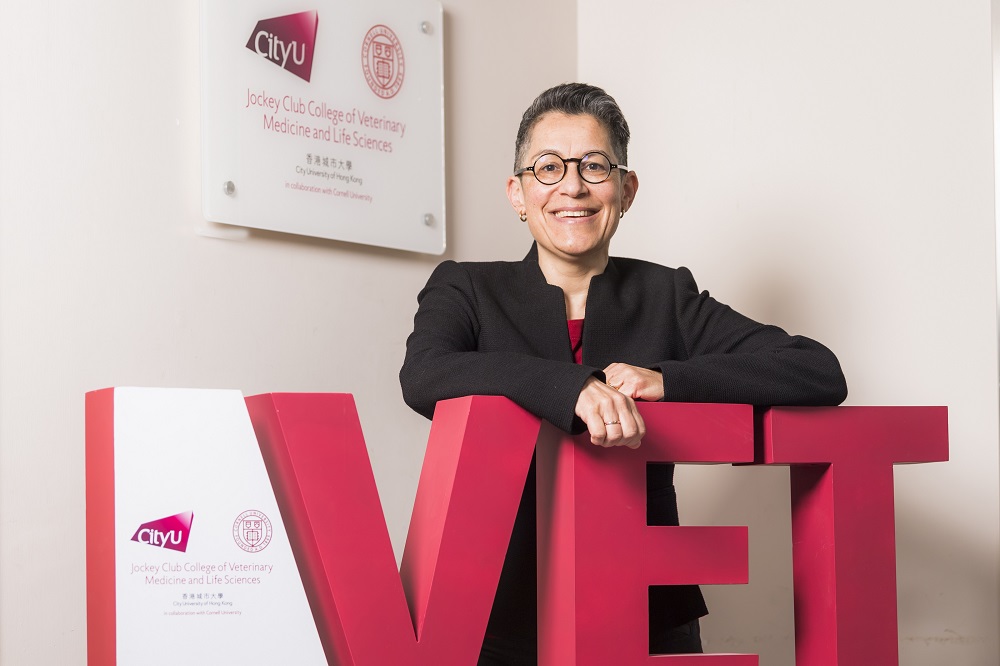Desexing cats before 4 months old can reduce the number of unwanted kittens
The global problem of unowned domestic cats, driven by the cats’ phenomenal reproductive success, carries significant economic, animal welfare and biodiversity costs. Big-data research led by an expert on veterinary medicine and infectious diseases at City University of Hong Kong (CityU), has found that although more than 80% of cats in Australia were desexed, only a fraction have had surgery before reaching puberty, thus creating a “pregnancy gap”. To close this gap and prevent unwanted litters, it is recommended that the age of desexing is before four months.
The research was led by Professor Julia Beatty, Head of the Department of Veterinary Clinical Sciences; Chair Professor of Veterinary Medicine and Infectious Diseases; and Director of the Centre for Companion Animal Health at CityU, in collaboration with the University of Sydney. Their findings have been recently published in the scientific journal Scientific Reports, titled “A shift towards early age desexing of cats under veterinary care in Australia”.
This is the first large scale analysis of feline desexing practices in Australia using outcomes documented in the patient medical record. Researchers at CityU and the University of Sydney studied anonymous medical records of over 52,000 cats brought into vet clinics, including pet cats, breeding cats, cats owned by shelters, and semi-owned cats in Australia.
Early onset of puberty in female cats

The team found that despite a clear shift over time towards desexing cats at a young age, only 21.5% of female cats were desexed at four months or younger, while 59.8% of female cats had been desexed by six months of age. “Cats’ early onset of puberty can be as young as 3.5 months of age in females,” explained Professor Beatty, who started this research with her team from the University of Sydney before she joined CityU. “This creates a potential pregnancy gap between the time the female cat reaches puberty and the age at surgery.”
Also, female cats were less likely than males to be desexed (at all) or to have undergone early-age desexing. “A female can give birth to up to six kittens in each litter, up to three litters every year. So this is suboptimal for preventing unwanted litters,” she said.
The recommendation of early-age desexing is made by global organisations including the Royal Society for the Prevention of Cruelty to Animals in Australia, the International Society for Feline Medicine and The Cat Group in the UK, as an important means to prevent unwanted kittens heading into overburdened and under-resourced shelters or into the stray cat population, which is detrimental to their well-being and puts additional stress on wildlife already impacted by other predators, habitat loss and global warming.

Early-age desexing is safe
“Evidence-based studies have shown that earlier desexing for cats is not only safe, it also offers advantages including shorter surgery time, a smaller incision and a quicker recovery, and reduced cancer risk,” Professor Beatty added.
Their latest study confirms that while the desexing rates in Australia are among the highest reported internationally, compared with 80% in the USA and 43% in Italy, opportunities to control reproduction by prepubertal desexing are still being lost. “We hope the findings will inform the design of front-line strategies promoting prepubertal desexing,” she said.

Other factors affect desexing
They also found that whether a cat was desexed or not, would be influenced by several factors. For example, purebred cats were less likely to be desexed than mixed breeds. Cats born in winter had the lowest odds of being desexed in each age group. Cats that were not desexed were more common in remote and low income areas.
“We really hope the research encourages anyone caring for a free-roaming cat in Hong Kong or elsewhere to arrange for that cat to be desexed, preferably before they reach four months of age. This would be a win for animal welfare and would help to reduce the number of unwanted kittens,” said Professor Beatty.
Professor Beatty is the corresponding author of the paper and the first author is Mr Loic Mazeau, a veterinary student studying at the Ecole Nationale Vétérinaire de Toulouse who completed a summer research project at the University of Sydney.
DOI number: 10.1038/s41598-020-79513-6